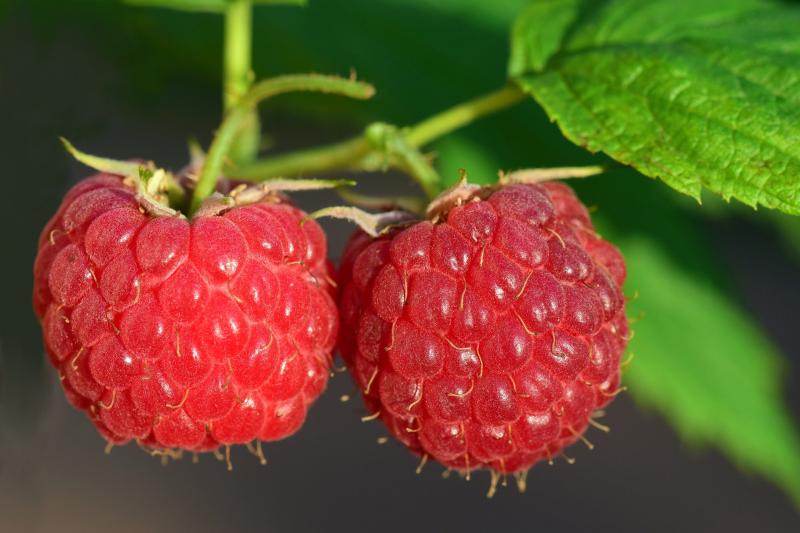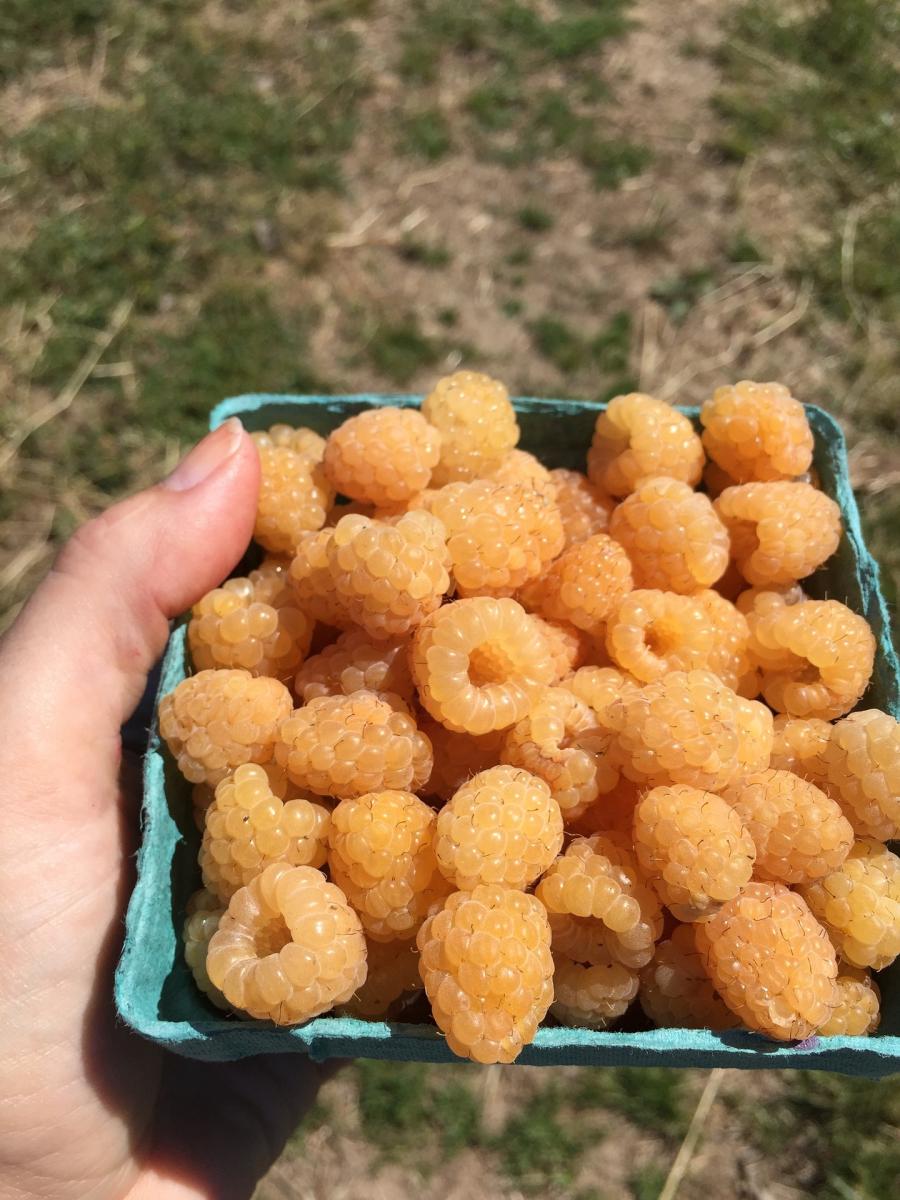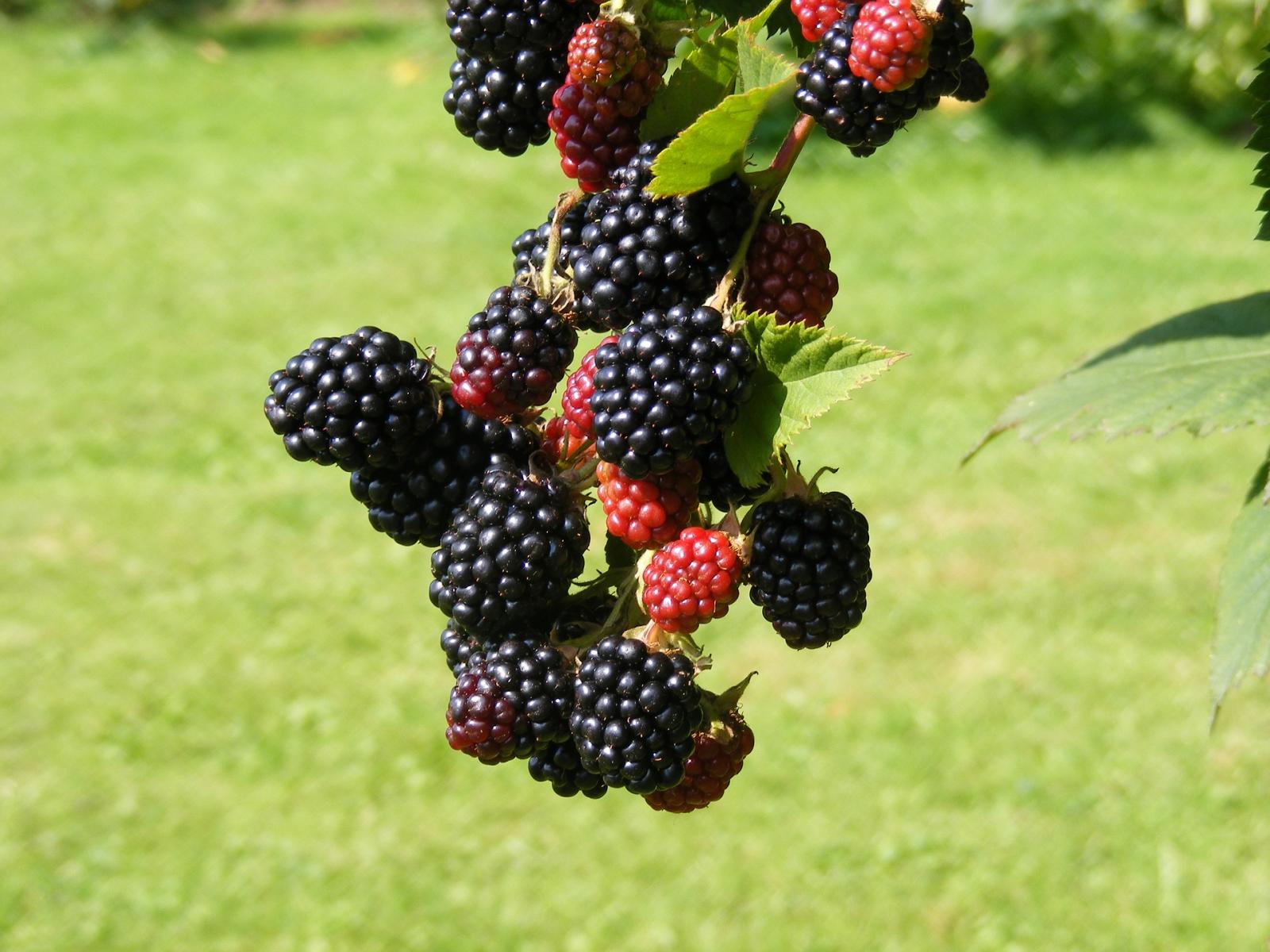
The popularity of home vegetable gardening has certainly been strong this year, continuing a trend that started 10-15 years ago. But this year's shelter-at-home practices encouraged an even larger group of new gardeners to try their hand at home food production.
Similarly, there is a growing interest in home fruit production. Aside from strawberries, there are several other fruits that are suitable for Nebraska gardens, including brambles, serviceberry, and gooseberry.
Brambles, a collective term for raspberries and blackberries, grow well in Nebraska. The site should have full sun and good air movement to reduce damage from spring frosts, winter injury and diseases. Some wind protection is recommended to reduce possible cane breaks or winter desiccation. Fall is a great time to get your site ready for spring fruit planting.
They grow in a wide range of soil, but prefer well-drained loam, high in organic matter. Do not plant raspberries & blackberries in soil formerly used to grow potatoes, tomatoes, peppers or eggplant. Wilt diseases affecting these crops also affect brambles and these pathogens may remain in the soil for many years.
Both raspberries and blackberries are self-fruitful.
 Raspberries
Raspberries
Red and yellow raspberries produce slender, upright, light brown canes and sucker readily from the crown of the parent plant. Black raspberries have vigorous, purplish-colored trailing canes that may need trellising. They are not as winter hardy as red raspberries and are also more highly susceptible to foliar and cane diseases, which can reduce production. Purple raspberries are hybrids of red and black cultivars, and tend to have a growth habit similar to black raspberries.
Raspberries can be divided into two groups, summer-bearing and fall-bearing. Summer-bearing plants produce one large crop of fruit in early summer. Fall-bearing plants, sometimes called "everbearing" raspberries, produce both a smaller crop of fruits in summer on the lower portion of second-year canes, and a larger crop in fall on first year canes. Fall-bearing plants are often managed to produce only a larger fall crop.
Good raspberry cultivars for use in Nebraska gardens include the following.
- Kilarney - an early season summer red raspberry with bright red medium sized fruits. Excellent cold hardiness.
- Latham - a mid-season summer red raspberry with good yield, firm round light red fruits and fair winter hardiness. Resistant to fungal diseases and virus.
- Cumberland - midsummer black raspberry with excellent flavor. Other good black raspberries include 'Bristol', 'Jewel' and 'Mac Black'.
- Royalty - purple raspberry with large sweet fruits on vigorous plants.
- Heritage - fall bearing red raspberry with large brilliant red fruits on vigorous plants. Other good fall red raspberries include 'Caroline' and 'Autum Bliss'.
- Anne - a fall bearing yellow raspberry with large, very sweet, pale yellow fruits.
- Fall Gold is another good fall bearing yellow raspberry with good cold temperature hardiness.
 Blackberries
Blackberries
An easy way to identify a blackberry from a raspberry is fruit structure. When a raspberry is picked the center of the fruit is hollow, but blackberries are not. Because blackberries are not hollow, they are less fragile than raspberries. Blackberries are slightly less hardy in Nebraska than raspberries, but they are a more tolerant of clay soils than raspberries.
Blackberries can be classified as either thorned or thornless, and erect or semi-erect. Thornless types are slightly less hardy than thorned types, but working with thornless plants is much easier. Erect plants do not require a trellis to grow well, which also makes them easier to grow in the home garden.
Blackberry cultivars are listed below, in order of winter hardiness with the most hardy listed first.
- Erect, thornless– Apache, Navaho, Arapahoe, Natchez
- Erect, thorned – Darrow, Illini Hardy, Kiowa, Shawnee
- Semi-erect, thornless - Chester, Black Satin, Dirksen and Triple Crown
Darrow and Illini Hardy have good cold hardiness and will produce a berry crop when other cultivars lose their fruit buds to winter conditions. However, their berries are smaller than other cultivars so are only recommended where winter temperatures are too extreme for other blackberry cultivars.
Another classification of blackberries is primocane bearing plants, which produce a summer berry crop on second year canes (floricanes) and a fall crop on first year canes (primocanes). These cultivars include Prime-Jan and Prime-Jim. However, when managed this way plants tend to produce fewer berries overall.
Next week, we'll look at two more great fruiting plants for the home garden- serviceberry and gooseberry.
For more information on growing brambles: Fruit Production
Images from Pixabay.
- Common golden raspberry cultivars include 'Anne' and 'Fall Gold'.
- Blackberries